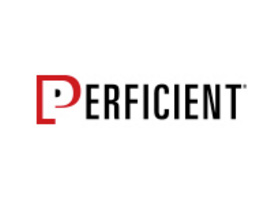When it comes to drug approvals, 2017 was a great year for the pharmaceutical industry. According to Reuters, the number of drugs approved in the United States was the highest number in 21 years. In fact, the 46 novel drugs that were approved was more than double what was approved in 2016. This figure doesn’t […]
Regulatory Compliance
[Guide] A Comprehensive Guide To FDIC Part 370
The Recordkeeping for Timely Deposit Insurance Determination rule, more commonly referred to as 12 CFR Part 370, or simply Part 370, became effective April 1, 2017. The rule details new recordkeeping and reporting requirements for the largest depository institutions that help ensure prompt payments to consumers in the event of institutional failures. Part 370 generally […]
6 Investigators Received FDA Warning Letters In 2017
It’s been awhile since I’ve written about FDA warning letters, so I thought I would take a look at the letters issued throughout the year and see if anything egregious (or at least interesting) came up. I was surprised to learn that the FDA issued letters to six separate clinical investigators, and I thought the […]
EMA Issues Brexit Guidance To Pharma
Pharmaceutical companies selling their products in the UK need to consider the impact Brexit will have on their operations. Some changes will need to be made before the UK leaves the European Union on March 30, 2019. In a press release, the European Medicines Agency (EMA) said: “The guidance document outlines the practical and simplified […]
European Medicines Agency (EMA) Is Moving To Amsterdam
The European Medicines Agency (EMA) is will be moving its offices from London to Amsterdam, due to the UK’s decision to withdraw from the European Union. According to a press release issued by the EMA, the relocation effort needs to be completed by the end of March 2019. The EMA currently employs close to 900 […]
5-Phase Approach To Sales Practices Compliance For Banks
Adjusting to the new regulatory environment Recent problems with bank employees opening unauthorized accounts for consumers have focused the regulatory spotlight on sales practices in the industry. The fallout from sales practices problems has been spectacular and well-publicized: Hundreds of millions of dollars in fines and legal costs Destruction of shareholder value Brand and reputational […]
Preparing And Enabling FDIC Part 370 Compliance
The Recordkeeping for Timely Deposit Insurance Determination rule, more commonly referred to as 12 CFR Part 370, or simply Part 370, became effective April 1, 2017. The rule details new recordkeeping and reporting requirements for the largest depository institutions that help ensure prompt payments to consumers in the event of institutional failures. Part 370 generally […]
[Guide] Machine Learning For AML & KYC Programs
In our guide titled “6 Ways to Mitigate Risk in Cross-Selling for Financial Services,” we briefly touched on the use of artificial intelligence and intelligent machines, along with comprehensive processes, to fight fraud. In combination with ‘know your customer’ (KYC) processes to help catch suspicious banking activity and reduce risk through the analysis of data […]
Leveraging Machine Learning For AML & KYC
In the recent “Shaping Digital Finance” session at the 20th Milken Institute Global Conference, Corrie Elston, chief technology officer, financial services, Google Cloud Platform, said that a financial services institution may experience 80% accuracy in detecting fraud and 99.5% false positives. As mentioned earlier, only about half of money laundering or terrorist financing incidents were […]
Examining The Issues With Today’s AML & KYC Strategies
While anti-money laundering (AML) programs may present the biggest opportunity for machine learning to thrive, there are many issues when it comes to fighting money laundering. The number and high caliber of resources required to battle fraud in today’s highly regulated environment are immense, and the cost – of both personnel and technology required to […]
Defining Anti-Money laundering (AML) & Know Your Customer (KYC)
According to the U.S. Department of the Treasury’s Financial Crimes Enforcement Network (FinCEN), “Money laundering is the process of making illegally gained proceeds (i.e., ‘dirty money’) appear legal (i.e., ‘clean’). Typically, it involves three steps: placement, layering and integration. First, the illegitimate funds are furtively introduced into the legitimate financial system. Then, the money is […]
What The FDA Requires Of Drugs On The Market
This is the final post in a brief series of posts (five in total) designed to demystify the high cost of prescription drugs in the U.S. Today’s post focuses on the fourth and final stage the of the FDA drug approval process: post-marketing. Before we dive into the final stage, here’s a quick recap of […]











